Yes, Afghan Hounds are large dogs, although they are on the line between medium and large-sized breeds. They tend to weigh between 40 and 77 pounds at maturity and stand 25 to 29 inches tall at the shoulder. They tend to be larger than Salukis but leaner and slightly shorter than Greyhounds.
Afghan Hound
Breed Type: Hound
Common nicknames: Afghan, Tazi, Tazi Spay, Kuchi Hound
Coat: Silky
Hypoallergenic: Yes, they may not trigger allergies.
Temperament: Reserved, sensitive, energetic, independent
Life expectancy: 12-15 years
Color & patterns:

Afghan Hounds are truly a sight to behold with their slender and graceful build. They typically stand at around 24 to 29 inches tall and have luxurious, silky hair that can be a variety of colors, from rich blacks to captivating creams. Afghan Hounds are known for their dignified and independent personalities and calm and gentle natures. This breed also has a keen sense of sight and speed, making them exceptional sighthounds. The history of the Afghan Hound can be traced back thousands of years to the rugged terrains of Afghanistan, where they were revered for their hunting skills. They were highly valued for their ability to chase down game, and their magnificent coats protected them from the harsh climate. Whether you’re up for a game of fetch or a long hike in the great outdoors, the Afghan Hound will be by your side, ready for any adventure.
Afghan Hound characteristics
Learn about about Afghan Hound basics like their fur colors, shedding levels, how much grooming they need, and other Afghan Hound facts.
Average height
25-29 inches (63.5-73.7cm)
Average weight
40-77 pounds (18.1-34.9 kg)
Average lifespan
12-15 years
Exercise needs
Grooming needs
Full-grown size
Good with cats
Good with kids
Training aptitude
Do Afghan Hounds shed?
Yes, Afghan Hounds shed, but minimally. However, unaltered dogs may shed more seasonally around their back and sides once they hit maturity. This elegant breed has long, flowing hair rather than dense fur, which contributes to their low-shedding characteristics.
What colors do Afghan Hounds come in?
The American Kennel Club (AKC) accepts all color and coat patterns for Afghan Hounds, although white markings, especially on the head, are considered undesirable. Common coat colors include black, black and tan, black and silver, blue, blue and cream, cream, red, silver, and white. Common coat patterns are brindle and domino (a pattern where the body is primarily one color, often darker, with tan or lighter points on the muzzle, eyebrows, chest, legs, and underside).
How long do Afghan Hounds live?
Afghan Hounds typically live for 12 to 15 years, which is comparable to the lifespans of similar sighthound breeds, such as Greyhounds and Salukis.
Several factors influence how long these breeds live. Genetics is a big one since parents with little to no genetic illnesses and long life spans are likely to pass this vitality on to their offspring. A balanced diet is crucial, too. Daily exercise is a must for maintaining heart health and muscle tone, especially for active breeds. Regular vet care, including check-ups, vaccinations, and quick treatment of any illnesses, is essential. The pup’s living environment also matters; a safe, enriching, and low-stress home reduces the chances of accidents and stress-related health issues.
Are Afghan Hounds related to Greyhounds?
Yes, Afghan Hounds are related to Greyhounds in that both belong to the Sighthound Group, characterized by their keen eyesight and exceptional speed, originally bred for hunting and chasing game by sight rather than scent. They are also both ancient breeds, although Greyhounds originated in Egypt.
When is an Afghan Hound fully grown?
An Afghan Hound typically reaches full height by around 12 to 16 months old, but they will continue to fill out and develop muscle mass until about two years of age. Growth plates, which are areas of cartilage at the ends of long bones and are responsible for bone growth, generally close by 12 to 18 months, marking the end of major skeletal growth. It’s recommended to transition your dog to adult dog food around 12 to 14 months to support their nutritional needs as they mature and their growth rate slows down.
Afghan Hound temperament
Learn about about the Afghan Hound temperament and how well they fit into your lifestyle, home environment, and family.
Are Afghan Hounds good swimmers?
No, like most other sighthounds, Afghan Hounds don’t tend to be good swimmers. Their long, slender bodies and relatively low body fat make them less buoyant in water compared to breeds developed as water dogs. Additionally, their thick, flowing coats can become heavy when wet, further hindering their ability to stay afloat and swim efficiently. Afghan Hounds may not naturally enjoy water activities, as their centuries of breeding have focused on land-based hunting in mountainous terrain.
Do Afghan Hounds bark a lot?
No, Afghan Hounds don’t bark a lot. This trait is partly due to their history as independent hunters; stealth was essential for tracking and hunting game. As a result, this breed tends to be reserved and less vocal. Their quiet demeanor also reflects their aloof and dignified personality, making them calm and composed companions. While they can bark when necessary, such as to alert their pet parents of something unusual, they are not prone to frequent or excessive barking.
If your adopted Afghan Hound barks excessively, this may be a sign that something is off with their mental, emotional, or physical health. It could be that their exercise and enrichment needs aren’t being met, they are experiencing chronic anxiety, or they may have an underlying medical condition that is causing abnormal behavior.
Are Afghan Hounds good family dogs?
Yes, Afghan Hounds can be good family dogs for a quiet household without rambunctious children. Afghan Hounds are not the dog for everyone, but they are well-loved by those who appreciate the unique characteristics of this ancient breed. This is a very independent-minded, high-maintenance, and energetic breed with a serious, silly streak and some mischievous tendencies.
Afghan Hounds need daily exercise and plenty of space to run. Daily walks aren’t enough, as thousands of years of breeding have ingrained a desire to run in them. Well-socialized Afghan Hounds may enjoy trips to the dog park to get out their zoomies. Leashed daily runs are another option for sporty pet parents. Having a large fenced-in yard with a doggie door is also ideal for this breed, so they can sprint around the yard as they please.
Are Afghan Hounds good with cats?
No, as sighthounds with a strong interest in chasing small animals, Afghan Hounds are not typically good with cats. Raising an Afghan Hound with cats from early puppyhood and using positive reinforcement to teach and reward calm and polite behavior around kitties from the get-go is your best bet for a harmonious relationship.
If you plan on adopting an adult Afghan Hound without a known history of being calm around cats, it’s best to either only finalize the adoption if you have a cat-free home or have the Afghan Hound and your kitty meet to ensure a good match.
Even if an initial meet-and-greet between them goes well, it’s still best to keep your newly adopted dog on a leash around the cat until you can be sure they won’t be chased. This plan will only work if you can keep the pets safely and comfortably separated in different areas of the house when your pup isn’t leashed. Once they can share space unleashed, make sure the cat has escape routes and high perches where they can retreat.
Are Afghan Hounds smart?
Yes, Afghan Hounds are smart. They think independently and make quick decisions, traits developed through their history as hunting dogs in Afghanistan’s challenging terrain. Their intelligence is evident in their problem-solving skills and keen ability to assess their surroundings, which served them well when tracking and chasing prey.
Their intelligence also translates into their graceful and deliberate movements, reflecting a natural elegance and situational awareness of their environment. This intelligent, active, and energetic breed excels at agility, rally, and lure coursing events.
Are Afghan Hounds affectionate?
Yes, Afghan Hounds can be affectionate and quite loving with their immediate family, although this dignified breed can also be pretty aloof. They are more prone to being reserved or standoffish with strangers. Afghan Hounds who aren’t well-socialized can be wary, fearful, or avoidant of people they don’t have strong bonds with.
If you adopt an Afghan Hound as a young puppy, thoroughly socialize them around lots of people, other pets, and new environments. Of course, as with any breed, it’s important not to flood your puppy during socialization, and instead, make sure that each interaction is positive, confidence-building, and not overwhelming.
Are Afghan Hounds fast?
Yes, Afghan Hounds are remarkably fast. This breed is one of the top five fastest breeds in the world and can reach sprinting speeds of 40 miles per hour.
Their slim, muscular build, long legs, and deep chest contribute to their speed and endurance. Their lightweight frame minimizes drag, allowing them to achieve impressive speeds while chasing prey across diverse terrains. Additionally, their keen eyesight and innate ability to anticipate movements enhance their agility and efficiency in pursuit, making them one of the swiftest breeds among dogs. This blend of athleticism and hunting prowess has honed their reputation as remarkable runners.
Are Afghan Hounds friendly?
Yes, Afghan Hounds can be friendly, especially with their family and people they trust. However, this somewhat reserved breed is certainly not as happy-go-lucky as some other breeds. Still, they weren’t bred as watch or guard dogs and don’t tend to exhibit protective, defensive, or guardian behaviors.
Early socialization and positive experiences can help Afghan Hounds become more comfortable and sociable, but they often retain a sense of independence and may not exhibit the same exuberant friendliness as some other breeds.
Are Afghan Hounds high-energy?
No, Afghan Hounds are not high-energy. While they need to exercise daily, which may include running and short bursts of intense activity, they tend to have a moderate energy level throughout the day and can remain quite calm as long as they have daily access to exercise. Afghan Hounds who have access to a large area to run at full speed for short bursts often spend the rest of their day relaxing. However, if they are consistently cooped up and denied daily runs, Afghan Hounds can become (understandably) stressed, restless, and destructive.
Are Afghan Hounds easy to train?
No, Afghan Hounds are not easy to train in the conventional sense because of their highly independent nature and strong instinct for making their own decisions. Because of centuries of breeding that selected for self-reliance and autonomous decision-making, these dogs prefer to think and act on their own. This independent nature can make them less responsive to training methods that rely on repetitive cues or tasks.
However, they tend to thrive in learning sessions that encourage them to make choices between two or more positive outcomes. Does your pup want to lie and stay on a mat for a certain amount of time for tasty treats, use toys and high-energy racing around to practice recall, or use their scratchboard to wear down their nails in exchange for treats?
Offering a variety of sessions and seeing what your dog is enthusiastic about can help your Afghan Hound lead their own learning and flex their independent-minded nature. It’s also important to allow them to leave training sessions if they don’t want to engage and then consider how to make future learning more appealing or choice-driven.
It’s also worth noting that training any dog takes substantial time and effort, regardless of breed.
Are Afghan Hounds good with kids?
No, Afghan Hounds aren’t typically good with kids because they are a very sensitive breed and don’t tend to do well with the spontaneous rambunctiousness of young children. They may do well with children who have been taught to be calm and gentle with dogs and to refrain from making sudden movements or loud sounds. These sensitive dogs do best when raised alongside respectful children from puppyhood or are introduced to older children who can better regulate their movements, voices, and emotions.
As with any breed, it is recommended that you always supervise interactions between Afghan Hound and young children. It’s especially important with this breed to emphasize to children the importance of approaching dogs calmly, gently petting them, not bothering them when they’re eating or sleeping, and giving plenty of space when the pup is showing common signs of stress or discomfort.
Afghan Hound history
Learn about where this Afghan Hound came from!
What were Afghan Hounds bred for?
Afghan Hounds were originally bred to hunt large and small game, including rabbits, mountain goats, and gazelles, over rugged and steep terrain. Their speed, agility, and keen eyesight made them ideal for spotting, chasing, and capturing prey. Additionally, their thick, silky coats protected them against the harsh climate of their native environment.
Today, most Afghan Hounds are family companions rather than hunters. Many also participate and excel in lure coursing, a sport that mimics chasing prey.
Where are Afghan Hounds from?
Afghan Hounds are from the rugged and mountainous regions in and around Afghanistan, northern India, and Pakistan. The exact date of this breed’s origin is not precisely known, but Afghan Hounds are believed to be one of the oldest domestic dog breeds, with a lineage possibly tracing back over six thousand years.
Afghan Hound health
Learn about about the Afghan Hound health outlook and what diseases they may be prone to at various stages of their life.
Are Afghan Hounds hypoallergenic?
Yes, Afghan Hounds are a low-shedding breed often characterized as hypoallergenic. Due to their coat type, this breed produces less dander and thus releases less pet allergens into the air and onto furniture.
It’s important to note, however, that all dogs produce allergens to some degree, and individual reactions can vary widely among those sensitive to the allergens in a dog’s dander, saliva, and urine. Regular grooming and maintenance of an Afghan Hound’s coat can help reduce allergen levels throughout the home.
Do you need to groom an Afghan Hound?
Yes, you need to consistently groom an Afghan Hound to prevent mats and tangles. Some organizations, such as the Afghan Hound Club of America, encourage pet parents to bathe them and then brush out their coats twice per week, taking care to only brush their coats when wet.
If you brush an Afghan Hound’s coat when dry, make sure to use an oval pin or slicker brush and start from the tips, gently working towards the roots to prevent breakage. Some pet parents lightly brush their Afghan Hounds daily, using a spray bottle to wet the coat before brushing, and then more thoroughly bathe and brush them once per week.
In addition to their high coat care needs, Afghan Hounds are also prone to dental disease and require teeth brushing at least three times per week with a dog-specific toothbrush and toothpaste. Their long ears also need weekly cleaning.
Do Afghan Hounds have a lot of health problems?
No, Afghan Hounds do not have a lot of health problems as a baseline for the breed. Still, like any breed, they do face some risks of inherited health conditions.
Hip dysplasia: This genetic condition occurs when the hip joint and socket don't fit together properly, causing pain, lameness, and arthritis over time. Pain relief, joint support supplements, and maintaining a healthy weight can help manage the symptoms.
Sensitivity to anesthesia: Like most sighthounds, the Afghan Hound has a sensitivity to anesthesia. This means it takes longer for them to recover from anesthesia and being put under anesthesia puts them at a higher risk of complications such as malignant hyperthermia.
Hypothyroidism: This condition occurs when the thyroid gland doesn’t produce enough thyroid hormone, leading to symptoms such as weight gain, lethargy, hair loss, and skin problems. It is typically managed with daily medication.
Hereditary myelopathy: Also known as degenerative myelopathy, this is a progressive disease of the spinal cord that leads to weakness and eventual paralysis of the hind limbs. There is no cure, but physical therapy and supportive care can help manage symptoms.
Gastric dilation-volvulus (GDV): Commonly known as bloat and occurring more often in deep-chested dogs like Afghan Hounds, GDV is a life-threatening condition where the stomach fills with gas and twists on itself. Immediate veterinary intervention is required, and preventive measures include feeding smaller, more frequent meals and avoiding vigorous exercise after eating.
Cataracts: This condition involves the clouding of the eye’s lens, which can lead to vision impairment or blindness, especially in older Afghan Hounds. Treatment often involves surgical removal of the cataracts to restore vision.
Popular Afghan Hound mixes
Several sporty and strong breeds commonly mix with Afghan Hounds, typically resulting in agile and strong mixed-breed pups. Some notable Afghan Hound mixes include:
Pooghan (Afghan Hound + Poodle)
Rottaf (Afghan Hound + Rottweiler)
Doberghan (Afghan Hound + Doberman Pinscher)
Afaird (Afghan Hound + Briard)

Find Afghan Hound puppies near you
Adopting an Afghan Hound
We don't see any Afghan Hounds available for adoption in your exact location or cities near you, but here are some adorable similar breeds in Columbus, OH.
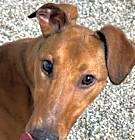
Pudge
Greyhound Hound (Unknown Type)
Female, 3 yrs 7 mos
Westerville, OH
Not good with dogs
Not good with cats
Spayed or Neutered
Shots are up-to-date
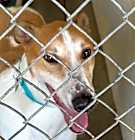
Woody
Greyhound Hound (Unknown Type)
Male, adult
Westerville, OH
Good with dogs
Not good with cats
Spayed or Neutered
Shots are up-to-date
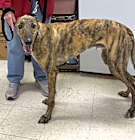
Reacher
Greyhound Hound (Unknown Type)
Male, 3 yrs 6 mos
Westerville, OH
Good with dogs
Not good with cats
Spayed or Neutered
Shots are up-to-date
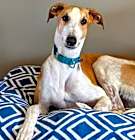
Pepper Jack
Greyhound Coonhound (Unknown Type)
Male, 2 yrs 6 mos
Westerville, OH
Good with dogs
Not good with cats
House-trained
Spayed or Neutered
Shots are up-to-date

Peter
Greyhound
Male, young
New Albany, OH
Not good with dogs
Not good with cats
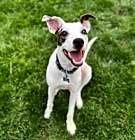
Meg
Greyhound
Female, young
New Albany, OH
Not good with dogs
Not good with cats

Pudge
Greyhound Hound (Unknown Type)
Female, 3 yrs 7 mos
Westerville, OH
Not good with dogs
Not good with cats
Spayed or Neutered
Shots are up-to-date

Woody
Greyhound Hound (Unknown Type)
Male, adult
Westerville, OH
Good with dogs
Not good with cats
Spayed or Neutered
Shots are up-to-date

Reacher
Greyhound Hound (Unknown Type)
Male, 3 yrs 6 mos
Westerville, OH
Good with dogs
Not good with cats
Spayed or Neutered
Shots are up-to-date

Pepper Jack
Greyhound Coonhound (Unknown Type)
Male, 2 yrs 6 mos
Westerville, OH
Good with dogs
Not good with cats
House-trained
Spayed or Neutered
Shots are up-to-date

Peter
Greyhound
Male, young
New Albany, OH
Not good with dogs
Not good with cats

Meg
Greyhound
Female, young
New Albany, OH
Not good with dogs
Not good with cats





